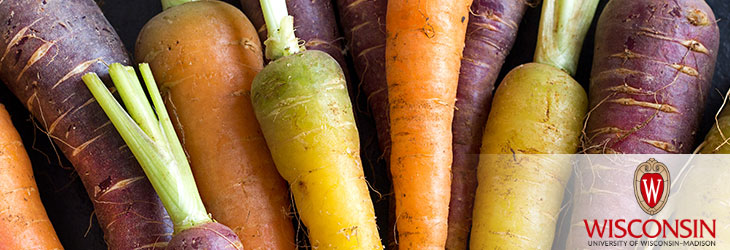Animals, Agriculture & Food

β-cyclodextrin Removes Off-Flavors from Soy Protein, Increases Flavor Stability
WARF: P090393US02
Inventors: Srinivasan Damodaran, Akshay Arora
The Wisconsin Alumni Research Foundation (WARF) is seeking commercial partners interested in developing an efficient and inexpensive method for significantly improving the quality of soy protein and foods made using the protein.
Overview
Although purified proteins are bland and lack flavor, they can influence flavor perception by directly interacting with flavor compounds or by acting on flavor precursors. This can lead to the development of off-flavors in certain foods.
Polyunsaturated fatty acids, which are plentiful in raw, crushed soybeans, oxidize easily and provide an off-flavor to the soybeans. They associate readily with soy protein and negatively impact food processed with the protein. To protect flavor, processors attempt to remove as much of the polyunsaturated fatty acids as possible.
Because these fatty acids typically are found as esters of phospholipids, removal of residual phospholipids should improve the quality and stability of soy protein flavor. However, removing phospholipids from purified proteins has proved difficult. The use of solvents causes protein denaturation and loss of solubility. In addition, residual solvents can contribute to off-flavors. New methods for removing off-flavors from soy protein are needed to improve market acceptance and commercial utilization of protein products derived from soy.
Polyunsaturated fatty acids, which are plentiful in raw, crushed soybeans, oxidize easily and provide an off-flavor to the soybeans. They associate readily with soy protein and negatively impact food processed with the protein. To protect flavor, processors attempt to remove as much of the polyunsaturated fatty acids as possible.
Because these fatty acids typically are found as esters of phospholipids, removal of residual phospholipids should improve the quality and stability of soy protein flavor. However, removing phospholipids from purified proteins has proved difficult. The use of solvents causes protein denaturation and loss of solubility. In addition, residual solvents can contribute to off-flavors. New methods for removing off-flavors from soy protein are needed to improve market acceptance and commercial utilization of protein products derived from soy.
The Invention
UW–Madison researchers have developed an efficient and cost-effective method for removing residual phospholipids from soy protein. This method solves the off-flavor problem in soy and other proteins derived from oilseeds.
While in solution, protein is contacted with a cyclodextrin, preferably a β-cyclodextrin. The β-cyclodextrin forms a complex with the phospholipids in the protein. The complex then can be separated from the remaining protein. A sonicating step and/or enzyme pretreatment with a lipid hydrolase such as phospholipase A2 may be used to maximize phospholipid removal.
While in solution, protein is contacted with a cyclodextrin, preferably a β-cyclodextrin. The β-cyclodextrin forms a complex with the phospholipids in the protein. The complex then can be separated from the remaining protein. A sonicating step and/or enzyme pretreatment with a lipid hydrolase such as phospholipase A2 may be used to maximize phospholipid removal.
Applications
- Production of food-grade proteins, particularly soy proteins, with excellent flavor profiles
Key Benefits
- Significantly improves the flavor profile of proteins
- Resulting protein product has no off-flavors, including a beany or grassy flavor.
- In combination with certain pretreatment conditions, β-cyclodextrin is capable of extracting more than 99 percent of soy protein-bound phospholipid.
- β-cyclodextrin is generally regarded as safe (GRAS) by the U.S. Food and Drug Administration.
- Method is sustainable, efficient and cost-effective.
Stage of Development
The development of this technology was supported by WARF Accelerator. WARF Accelerator selects WARF's most commercially promising technologies and provides expert assistance and funding to enable achievement of commercially significant milestones. WARF believes that these technologies are especially attractive opportunities for licensing.
Publications
For current licensing status, please contact Emily Bauer at [javascript protected email address] or 608-960-9842
- Arora A. and Damodaran S. 2010. Competitive Binding of Off-Flavor Compounds with Soy Protein and b-Cyclodextrin in a Ternary System: A Model Study. J. Amer. Oil Chem. Soc. 87, 673-679.